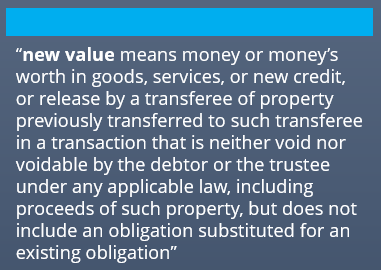
Approve More Small Businesses for Larger Sales
By: Pam Ogden President, Business Credit Reports
As originally published in the Credit Research Foundation 3Q 2018 CRF News
Small businesses are a critical component of the American economic engine, contributing about half of the gross domestic product of the US. Companies that undervalue this all-important segment are leaving money on the table.
In any credit deal, you want to extend as much credit as possible without exceeding acceptable risk levels to generate the biggest sales possible. This principle is not limited to only large, well- established companies with dozens or hundreds of tradelines. The same applies to smaller, growing companies that may have more limited credit records. The challenge is in collecting enough information on the smaller company to establish a certain level of comfort on the risk front. The more information, the better, of course.
Smaller Companies Have Thinner Credit Records
Companies that issue credit are not required to report their payment data to all of the credit bureaus. In fact, they are generally not required to report payment activity at all. The credit bureaus all have data acquisition teams whose sole job is to get lenders, manufacturers, distributors, utilities and other companies to send them their account data to build and update the credit bureau’s database.
So, if there is nothing forcing companies to report their payment data to the credit bureaus, what is the result? We get disparate credit records across the various credit bureaus. Each credit bureau has a different perspective on a company. Nobody has the complete picture. This problem is amplified in the case of a small business that doesn’t have many credit relationships to begin with. Each credit relationship makes up a greater share of the complete credit picture. Missing even one or two of these can dramatically change the risk profile of a small company.
Credit managers know that less data on a prospective customer frequently means more risk. Credit policies are written to reduce credit offered when there is less information on a company. This puts smaller companies at a disadvantage in terms of obtaining the credit that they need to grow their business. It also means the company issuing credit to the small business is granting less credit, thereby limiting the revenue opportunity.
Combining Multiple Credit Data Sources is the Key
The problem of incomplete credit records on small businesses is solved by leveraging multiple credit bureaus in the credit granting process. If each credit bureau has a piece of the complete picture, putting them all together delivers a full 360-degree view of the company. With three major credit bureaus and several others with strength in particular industries, the only way to get a complete credit picture of a small company is to pull them together.
Many credit managers employ a first-pull/second-pull practice whereby they check one credit bureau first, and then cascade to additional bureaus for additional information as needed. The drawback with this approach is you are paying for multiple reports to multiple providers and those reports are separate reports. Also, a hit on the first pull may result in a credit approval without proceeding to the second pull, which may indicate a higher credit limit.
A more efficient and economical approach is to utilize a business credit information provider that combines the data and analytics from multiple credit bureaus into one report. This means only one report needs to be pulled by the credit analyst and only one credit vendor relationship needs to be maintained by the credit manager. Also, the total price of a blended business credit report is frequently lower than the total price of multiple credit reports.
Higher Hit Rates
Often, small businesses are declined for credit because no record could be found in the queried database. This is a lost opportunity for the small business applicant and could also be a lost opportunity for the company that is considering issuing credit.
Pulling the data of multiple business credit bureaus into one report results in higher hit rates on small businesses. While one credit bureau may not have any information on a small company, another one might. Checking the databases of two, three or four credit bureaus increases the likelihood of finding a credit record on a small company.
While it may not be practical to query two, three or four credit bureaus separately, using a credit information provider or tool that connects to all of the bureaus gets the job done in one search. This results in higher hit rates and more approvals.
Bigger Sales
Bigger sales require higher credit limits. Higher credit limits require more information on a company that supports the case to grant credit. By pulling together data from multiple credit bureaus, you build a thicker, more complete credit record. With a more complete credit record, credit managers are able to approve higher credit lines which accommodate larger sales.
Credit managers that are able to approve larger credit lines without increasing risk are heroes to their companies. Sales people are happy because Credit granted them room to negotiate a large deal. Management is happy because more revenue is flowing in.
More Prospects for Growth
Today’s small businesses are tomorrow’s medium and large companies. Once a budding company has established a relationship with a vendor, it’s unlikely they will change as long as the provider continues to deliver as needed.
Establishing relationships with companies early in their life cycle enables suppliers to grow their own business and increases the prospects of a long, mutually-beneficial relationship.
In fact, one of the main reasons growing companies switch providers is because another provider is willing to grant more credit than the incumbent. Using a multi-bureau credit solution or tool can establish the relationship on the right foot with larger credit lines and keep it that way as credit lines are extended over the life of the relationship.
More Information Means Less Risk
We’ve covered how pulling together data from multiple credit bureaus into one solution increases revenue, but we’d be remiss if we didn’t also mention the fact that having more information on small businesses helps mitigate risk.
Because the credit bureaus frequently don’t have the full picture on small businesses, the credit bureau used in a single-bureau model may paint a rosy picture of a company while missing a key piece of derogatory information. Pulling together multiple credit bureaus’ data into one report reduces the chances of missing a key negative factor.
The Key Takeaway
Don’t leave money on the table as a result of no-hits and thin credit records on small businesses! Access credit reports that pull all the credit bureaus together into one search and one report for stronger hit rates and a more complete credit picture. With a comprehensive picture, you can issue higher credit limits and minimize your risk.
Would you like access to comprehensive credit reports without the hassle of contracts?









